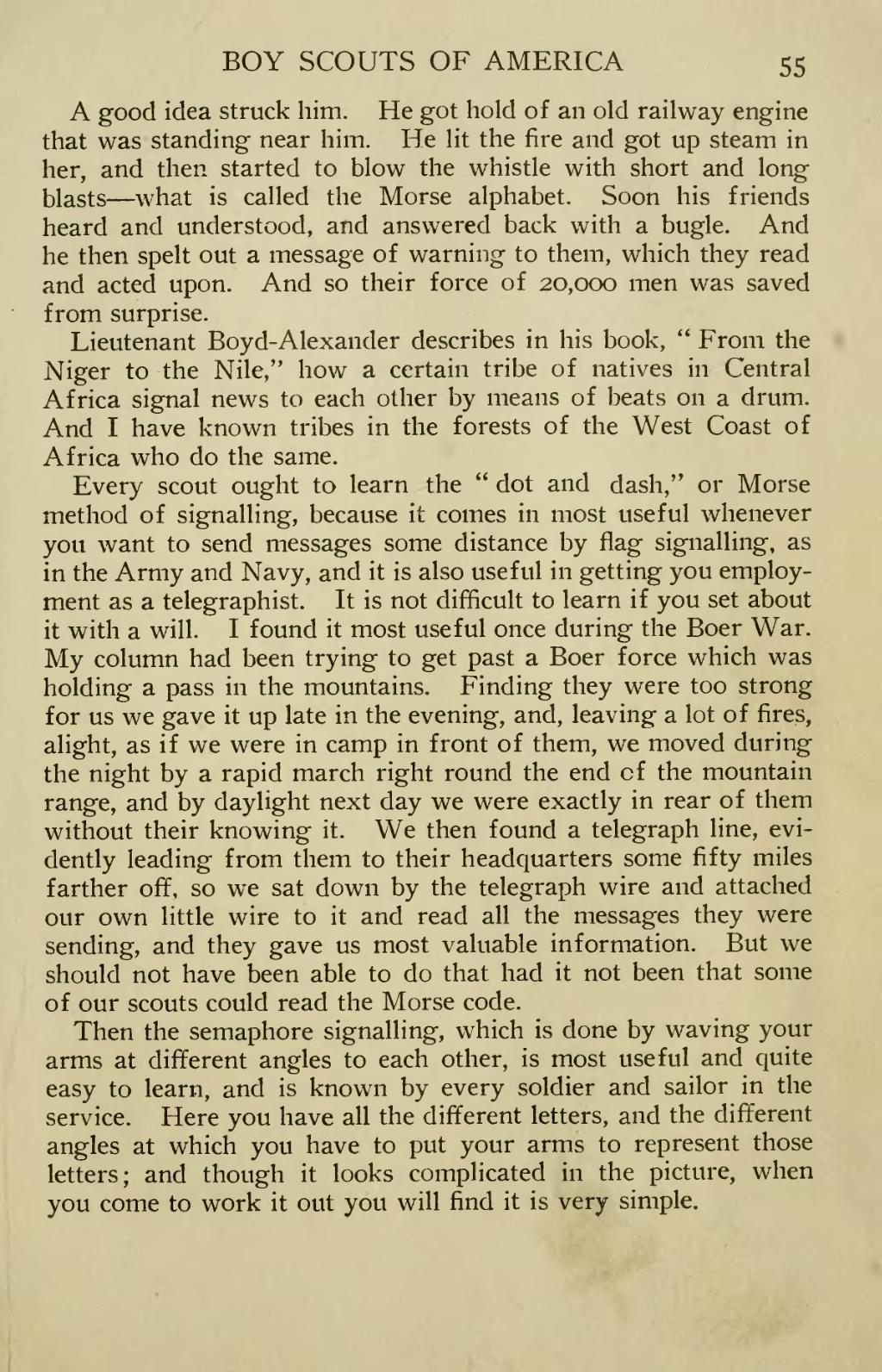BOY SCOUTS OF AMERICA 55 A good idea struck him. He got hold of an old railway engine that was standing near him. He lit the fire and got up steam in her, and then started to blow the whistle with short and long blasts — what is called the Morse alphabet. Soon his friends heard and understood, and answered back with a bugle. And he then spelt out a message of warning to them, which they read and acted upon. And so their force of 20,000 men was saved from surprise. Lieutenant Boyd-Alexander describes in his book, " From the Niger to the Nile," how a certain tribe of natives in Central Africa signal news to each other by means of beats on a drum. And I have known tribes in the forests of the West Coast of Africa who do the same. Every scout ought to learn the " dot and dash," or Morse method of signalling, because it comes in most useful whenever you want to send messages some distance by flag signalling, as in the Army and Navy, and it is also useful in getting you employ- ment as a telegraphist. It is not difficult to learn if you set about it with a will. I found it most useful once during the Boer War. My column had been trying to get past a Boer force which was holding a pass in the mountains. Finding they were too strong for us we gave it up late in the evening, and, leaving a lot of fires, alight, as if we were in camp in front of them, we moved during the night by a rapid march right round the end of the mountain range, and by daylight next day we were exactly in rear of them without their knowing it. We then found a telegraph line, evi- dently leading from them to their headquarters some fifty miles farther off, so we sat down by the telegraph wire and attached our own little wire to it and read all the messages they were sending, and they gave us most valuable information. But we should not have been able to do that had it not been that some of our scouts could read the Morse code. Then the semaphore signalling, which is done by waving your arms at different angles to each other, is most useful and quite easy to learn, and is known by every soldier and sailor in the service. Here you have all the different letters, and the different angles at which you have to put your arms to represent those letters; and though it looks complicated in the picture, when you come to work it out you will find it is very simple.
Stránka:roll 1910.djvu/71
Z thewoodcraft.org
Jmenné prostory
Více
- Více
Možnosti stránky
Verze z 20. 5. 2016, 13:53, kterou vytvořil Keny (diskuse | příspěvky) (→Nebylo zkontrolováno: Založena nová stránka s textem „BOY SCOUTS OF AMERICA 55 A good idea struck him. He got hold of an old railway engine that was standing near him. He lit the fire and got up steam in he…“)
(rozdíl) ← Starší verze | zobrazit aktuální verzi (rozdíl) | Novější verze → (rozdíl)
Tato stránka nebyla zkontrolována
